Owls are fascinating creatures that have captured the imagination of humans for centuries. With their large, round eyes and silent flight, they are often associated with wisdom and mystery. One peculiar behavior that owls exhibit is the bobbing of their heads.
This rhythmic movement has puzzled researchers and bird enthusiasts alike, leading to the question: why do owls bob their heads, and does it mean anything? Let’s find out!
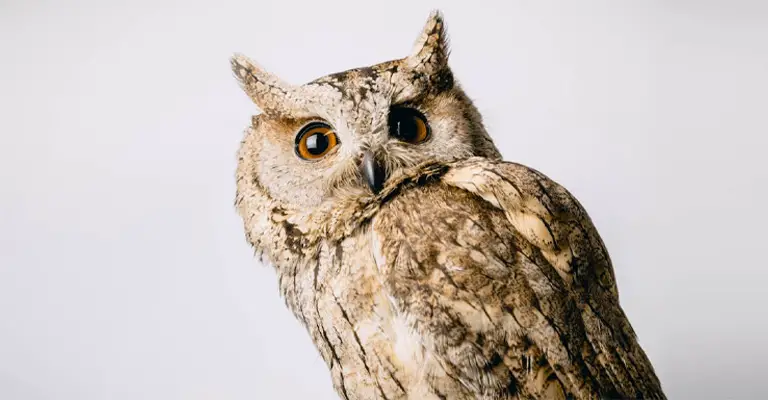
Why Do Owls Bob Their Head?
To understand this behavior, we must first delve into the anatomy of owls. Owls have a unique neck structure that allows them to rotate their heads to an extraordinary degree.
Unlike humans, who have seven neck vertebrae, owls have 14. This increased number of vertebrae, combined with specialized blood vessels and other adaptations, enables owls to rotate their heads up to 270 degrees in either direction.
Survival
The ability to rotate their heads so extensively is crucial for owls’ survival. Owls are predators that rely on their exceptional vision and hearing to locate and capture prey.
By rotating their heads, they can scan their surroundings without moving their bodies, minimizing the risk of detection.
This is particularly advantageous when hunting in dense vegetation or low-light conditions. So, how does head-bobbing fit into this picture? Head-bobbing is a behavior commonly observed in owls when they are focusing on an object or prey.
It involves a rhythmic movement of the head, usually up and down or side to side. This behavior is more pronounced in some owl species than others, but it is generally believed to serve survival purposes.
Easy Preying
One theory suggests that head-bobbing helps owls gauge the distance to their prey. Owls have binocular vision, meaning their eyes are positioned in front of their heads, allowing them to perceive depth. However, their eyes are fixed in their sockets, limiting their ability to judge distances accurately.
By bobbing their heads, owls may be able to triangulate the distance to their prey more precisely. This hypothesis is supported by studies that have shown a correlation between head-bobbing frequency and the distance to the target.
Improved Visual Images
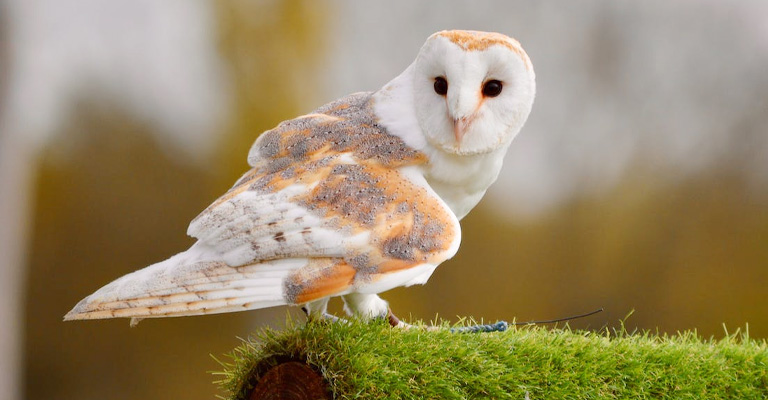
Another theory proposes that head-bobbing helps owls maintain a stable visual image. When an owl is fixated on an object, its eyes are constantly moving to keep the image on the fovea, the area of the retina responsible for detailed vision.
However, the owl’s head movements can cause the image to shift, leading to a loss of visual acuity. By bobbing their heads, owls may be compensating for this movement, ensuring that the image remains stable on their fovea.
Auditory Perception
Furthermore, head-bobbing may also play a role in enhancing the owl’s auditory perception. Owls have asymmetrical ear openings, with one ear positioned higher than the other. This arrangement allows them to locate sounds accurately and determine the direction from which they are coming.
By bobbing their heads, owls may be able to fine-tune their auditory perception, enabling them to pinpoint the exact location of their prey or potential threats.
While head-bobbing in owls appears to serve a functional purpose, it is important to note that not all head movements are related to hunting or prey detection. Owls also bob their heads during courtship displays, territorial disputes, and other social interactions.
Why do Barn Owls Bob Their Head So Much?
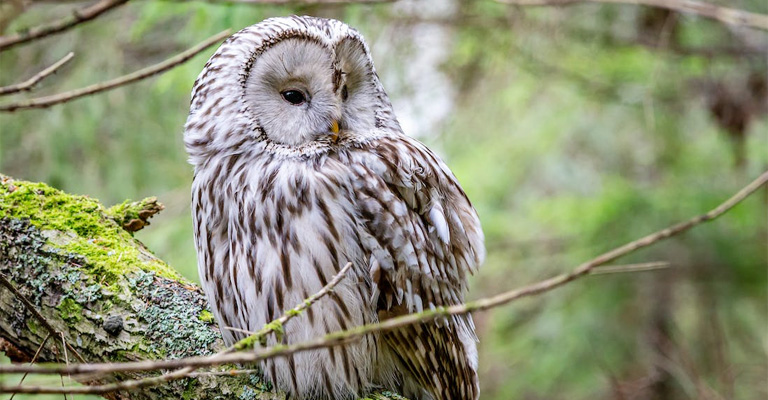
Barn owls are known for their distinctive head-bobbing behavior, which is more pronounced in this species compared to others.
The reasons why barn owls bob their heads so much can be attributed to their unique hunting strategies and specialized adaptations. Let’s explore some of the key factors that contribute to this behavior.
Enhancing Depth Perception
Barn owls have binocular vision, meaning their eyes are positioned in front of their heads, allowing them to perceive depth. However, their fixed eyes limit their ability to accurately judge distances.
By bobbing their heads, barn owls can triangulate the distance to their prey more precisely. This head-bobbing motion helps them fine-tune their depth perception, ensuring they can accurately gauge the distance to their target.
Compensating for Fixed Eyes
As mentioned earlier, barn owls have fixed eyes, which means they cannot move their eyes within their eye sockets. This limitation restricts their ability to scan their surroundings without moving their heads.
Head-bobbing allows barn owls to compensate for this constraint by adjusting their visual perspective. By moving their heads, they can gather visual information from different angles, expanding their field of view and increasing their chances of detecting prey.
Stabilizing Visual Image
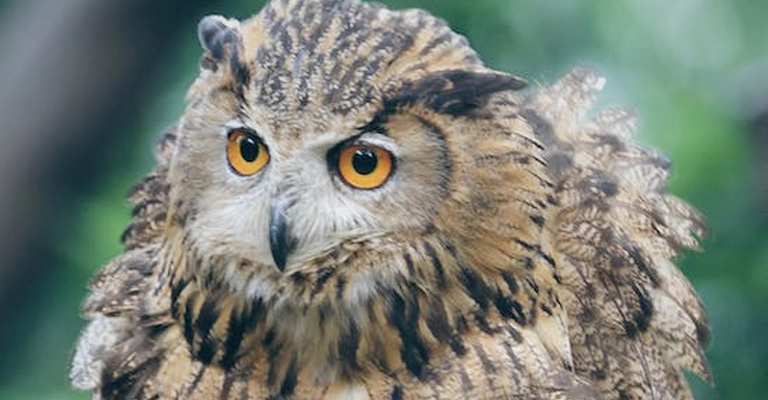
Barn owls have excellent visual acuity, which is crucial for hunting in low-light conditions. However, their head movements can cause the image to shift, potentially leading to a loss of visual clarity.
By bobbing their heads, barn owls can stabilize the visual image on their fovea, the area of the retina responsible for detailed vision. This ensures that the image remains focused and clear, allowing them to accurately track and capture their prey.
Enhancing Auditory Perception
In addition to their visual adaptations, barn owls have exceptional auditory capabilities. They rely heavily on their acute hearing to locate prey, even in complete darkness. Head-bobbing behavior in barn owls may also enhance their auditory perception.
By adjusting the position of their heads, they can fine-tune their ability to pinpoint the exact location of sounds. This head movement helps them accurately determine the direction from which sounds are coming, aiding in their hunting success.
Hunting Strategy
Barn owls primarily hunt small mammals, such as mice and voles, which often hide in vegetation or underground burrows. The head-bobbing behavior of barn owls allows them to scan their surroundings more effectively, especially in dense vegetation or when prey is concealed.
By moving their heads, they can search for movement or listen for sounds that indicate the presence of potential prey. This hunting strategy increases their chances of locating and capturing their elusive targets.
The Biology of Owl-Head Bobbing
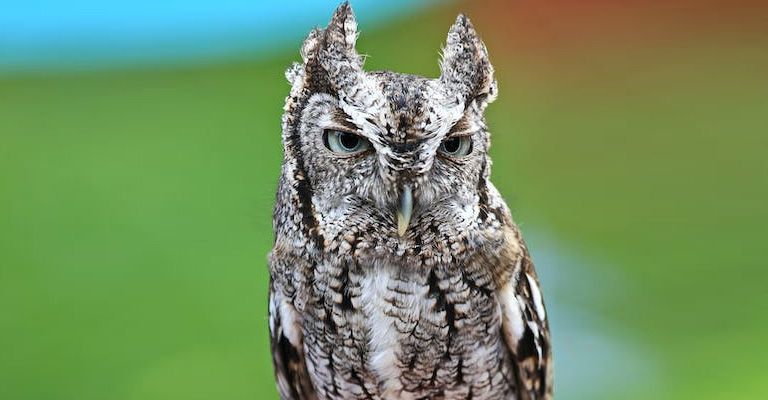
The biology of owl head bobbing is a fascinating subject that involves the intricate anatomy and physiology of these remarkable birds. Let’s explore the key biological aspects that contribute to this behavior.
Neck Structure
Owls possess an extraordinary neck structure that allows them to rotate their heads to an impressive degree. Unlike humans, who have seven neck vertebrae, owls have 14.
These additional vertebrae, along with specialized blood vessels and other adaptations, enable owls to rotate their heads up to 270 degrees in either direction. This exceptional neck flexibility is crucial for their survival as predators.
Binocular Vision
Owls have forward-facing eyes, providing them with binocular vision. This means that their eyes are positioned in front of their heads, allowing them to perceive depth and have a three-dimensional view of their surroundings. Binocular vision is essential for accurately judging distances and accurately locating prey.
Fixed Eyes
Unlike humans and many other animals, owls have fixed eyes, meaning they cannot move their eyes within their eye sockets. This fixed eye structure limits their ability to scan their surroundings without moving their heads.
Consequently, owls rely on head movements to compensate for this limitation and gather visual information from different angles.
Visual Acuity
Owls have excellent visual acuity, which is the ability to see fine details. Their eyes are large and well-adapted for low-light conditions, allowing them to hunt effectively during the night.
The head-bobbing behavior of owls helps them maintain a stable visual image, ensuring that the image remains focused on their fovea, the area of the retina responsible for detailed vision.
By bobbing their heads, owls compensate for any movement that could cause the image to shift, thus preserving visual acuity.
Auditory Perception
In addition to their exceptional vision, owls have highly developed auditory systems. They have asymmetrical ear openings, with one ear positioned higher than the other. This arrangement allows them to accurately locate sounds and determine the direction from which they are coming.
Head-bobbing behavior in owls may also enhance their auditory perception. By adjusting the position of their heads, owls can fine-tune their ability to pinpoint the exact location of sounds, such as the rustling of prey or potential threats.
Functional Significance
The head-bobbing behavior of owls serves several important functions. It helps them gauge the distance to their prey more accurately, maintain a stable visual image, and enhance their auditory perception.
By bobbing their heads, owls can triangulate the distance to their target, compensate for any movement that could affect visual acuity, and fine-tune their ability to locate sounds.
What Owls See When They Bob Their Heads?
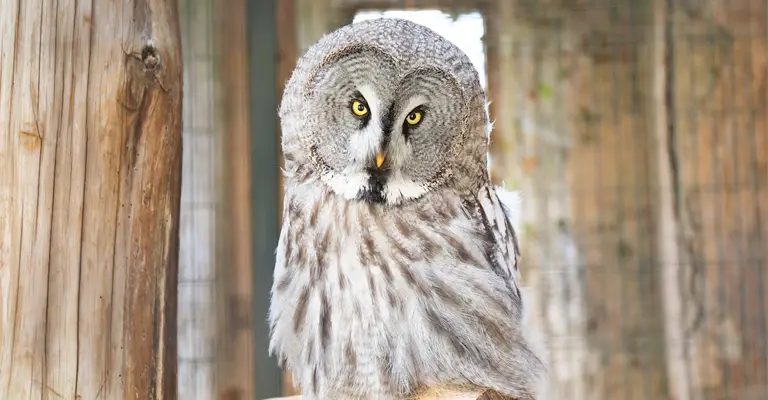
When owls bob their heads, they are constantly adjusting their visual perspective and gathering information about their surroundings. Due to their fixed eyes and specialized neck structure, the head-bobbing motion allows owls to enhance their visual perception in several ways.
Firstly, owls have binocular vision, meaning their eyes are positioned in front of their heads, providing them with depth perception. However, their fixed eyes limit their ability to judge distances accurately.
By bobbing their heads, owls can triangulate the distance to their prey or objects of interest more precisely. This helps them determine the exact location and distance of their target, aiding in successful hunting.
Secondly, head-bobbing helps owls maintain a stable visual image. When an owl is fixated on an object, its eyes are constantly moving to keep the image on the fovea, the area of the retina responsible for detailed vision.
Why Do Owls Turn Their Heads Upside Down?
Contrary to popular belief, owls do not turn their heads upside down. Owls have an impressive range of motion in their necks, allowing them to rotate their heads up to 270 degrees in either direction. However, they cannot rotate their heads a full 360 degrees or turn them completely upside down.
The ability of owls to rotate their heads to such a great extent is due to their unique neck anatomy. Owls have 14 neck vertebrae, compared to the seven found in humans. These additional vertebrae, along with specialized blood vessels and other adaptations, provide owls with exceptional neck flexibility.
So, while owls can rotate their heads to seemingly extreme angles, they do not turn them completely upside down. The misconception that owls can turn their heads upside down may stem from their ability to rotate their heads so far that they can look directly behind themselves.
FAQs
No, not all owl species exhibit head-bobbing behavior. While head-bobbing is commonly observed in many owl species, the extent and frequency of the behavior can vary. Some species, such as the Great Horned Owl, are known for their pronounced head-bobbing, while others may exhibit it to a lesser degree or not at all.
Contrary to popular belief, owls cannot rotate their heads in a full circle. While they have an impressive range of motion, they are limited by the structure of their necks.
No, head-bobbing behavior is not exclusive to owls. While it is more commonly associated with owls due to their unique neck structure, other bird species, such as pigeons and doves, also exhibit head-bobbing.
In some cases, excessive head-bobbing in owls can be a sign of illness or injury. If an owl is displaying abnormal head-bobbing behavior, such as repetitive or uncontrolled movements, it may indicate a neurological issue or injury.
While humans cannot replicate the full range of head movements that owls can achieve, it is possible to imitate the basic head-bobbing motion. However, it is important to note that head-bobbing in owls serves specific purposes related to their unique anatomy and sensory perception.
Final Words
That was all about why do owls bob their head – does that mean anything? The bobbing of owls’ heads is a fascinating behavior that serves multiple purposes.
It helps owls gauge the distance to their prey, maintain a stable visual image, and enhance their auditory perception. Additionally, head-bobbing may also play a role in social communication among owls.
Further research is needed to fully understand the intricacies of this behavior and its significance in different contexts. Nonetheless, the head-bobbing of owls remains a captivating spectacle that adds to the allure and mystique of these remarkable creatures.